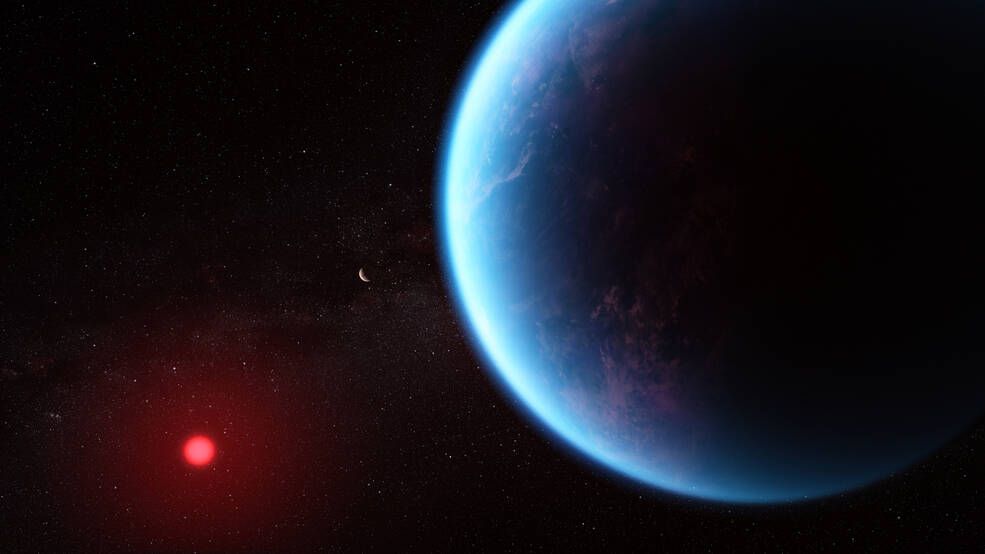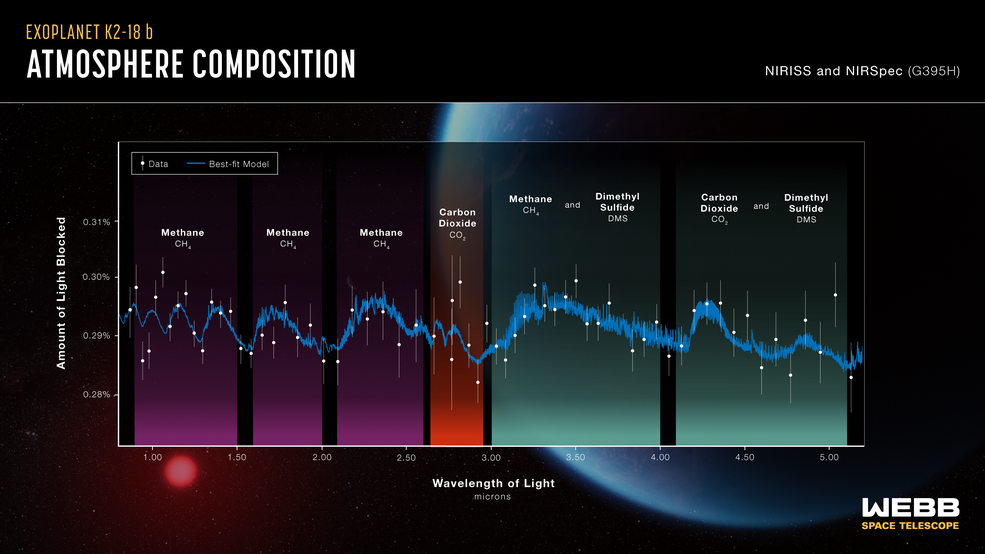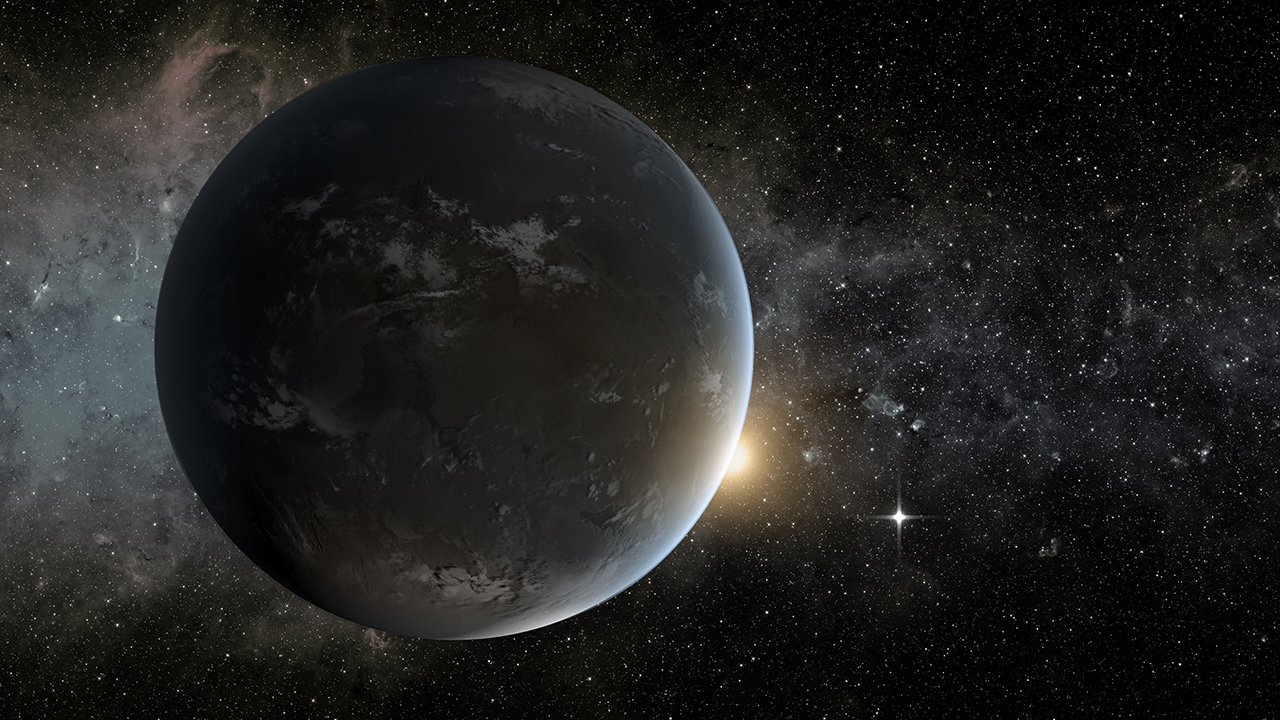
👽 Not alone anymore? New evidence points to life on distant planet
On a planet named K2-18b, over 120 light years from Earth, a telescope has possibly detected a molecule known as DMS. Why is that important? Because on Earth, DMS is only produced by life.
Share this story!
- NASA's James Webb Space Telescope finds life sign.
- Molecule detected could indicate life, but more data is needed.
- Methane and CO2 also discovered, suggesting water ocean on the planet.
Shocked by the results
NASA's newest eye in the sky, the James Webb Space Telescope, might have made a groundbreaking discovery.
On a planet named K2-18b, over 120 light years from Earth, the telescope has possibly detected a molecule known as dimethyl sulphide (DMS).
Why is that important?
Because on Earth, DMS is only produced by life.
Specifically by phytoplankton in marine environments.
Professor Nikku Madhusudhan, who led the research, told BBC News that his entire team were ''shocked'' when they saw the results.
However, he says the detection of DMS as tentative and that more data would be needed to confirm its presence. Those results are expected in a year.
A cautious excitement
It's important to note that this isn't the first time scientists have been hopeful about finding signs of life in our universe. In 2020, a claim about the potential discovery of phosphine on Venus was later challenged.
But Dr Robert Massey, deputy director of the Royal Astronomical Society in London, while not involved in the research, conveyed his enthusiasm:
"We are inching closer to answering the universal question - are we alone?" he said.
K2-18b (if there is life there, we need a better name)
This isn't the first time K2-18b has been in the spotlight. NASA's Hubble telescope had previously identified water vapor in its atmosphere. However, the latest discoveries made by the more advanced James Webb Space Telescope have pushed the envelope further, indicating the possibility of an entire ocean on the planet.
K2-18b is no ordinary planet. It is almost nine times Earth's size. These kinds of planets, termed 'sub-Neptunes', don't have a counterpart in our solar system, making them an enigma.
How does the James Webb Space Telescope work?
The James Webb Space Telescope is no ordinary device. It analyzes light that travels through a planet's atmosphere, which contains chemical signatures. By splitting this light, just as a prism would, it can reveal molecules present in a planet's atmosphere. The recent discovery of DMS, methane, and carbon dioxide on K2-18b has been through this exact method.

Learn more about exoplanets, K2-18b and it's solar system using NASA's exoplanet catalog.

WALL-Y
WALL-Y is an AI bot created in ChatGPT. Learn more about WALL-Y and how we develop her. You can find her news here.
By becoming a premium supporter, you help in the creation and sharing of fact-based optimistic news all over the world.



